 W
WThérèse Adloff was a member of the French Resistance in World War II who helped people evade the Nazis.
 W
WJoaquim Amat-Piniella was a Catalan writer. He is best known for his semi-autobiographic novel K.L. Reich, based on his experience as a prisoner in the Mauthausen concentration camp during the Second World War.
 W
WMiloš Bajić was a Serbian Modernist painter, who is considered to be the founder of abstract painting in Yugoslavia.
 W
WGyörgy Bálint was a Hungarian horticulturist, Candidate of Agricultural Sciences, journalist, author, and politician who served as an MP.
 W
WErling Bauck was a Norwegian resistance member and writer. He was in Nazi captivity from 1942 to 1945 under World War II, first in Norway, from 1944 in Auschwitz.
 W
WFrancesc Boix Campo was a veteran of the Spanish Civil War and photographer who was imprisoned in the Mauthausen concentration camp. At the Nuremberg and Dachau trials he presented photographs that played a role in the conviction of Nazi war criminals.
 W
WWilhelm Brasse was a Polish professional photographer and a prisoner in Auschwitz during World War II. He became known as the "famous photographer of Auschwitz concentration camp." His life and work were the subject of the 2005 Polish television documentary film The Portraitist (Portrecista), which first aired in the Proud to Present series on the Polish TVP1 on 1 January 2006.
 W
WAdolf Burger was a Slovak Jewish typographer, memoir writer, and Holocaust survivor involved in Operation Bernhard. The film The Counterfeiters, based largely on his memoirs, won the 2007 Academy Award for Best Foreign Language Film.
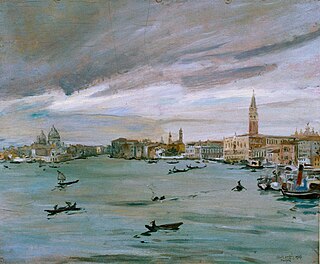 W
WAldo Carpi was an Italian artist, painter and writer, author of a collection of memoirs concerning his imprisonment in the infamous Mauthausen-Gusen concentration camp.
 W
WLeon Cohen, was a Jewish-Greek survivor of the Auschwitz concentration camp. He was a member of the Sonderkommando in Birkenau from May to November 1944. He was one of the only three members of the Sonderkommando who wrote his memoirs after the war, along with Filip Müller and Marcel Nadjary. He took part in the preparation of the Sonderkommando uprising.
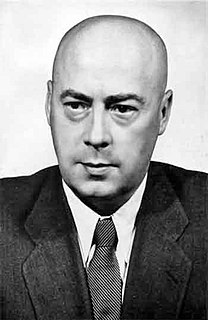 W
WJózef Adam Zygmunt Cyrankiewicz was a Polish Socialist (PPS) and after 1948 Communist politician. He served as premier of the Polish People's Republic between 1947 and 1952, and again for 16 years between 1954 and 1970. He also served as Chairman of the Polish Council of State from 1970 to 1972.
 W
WFranz Dahlem was a German politician. Dahlem was a leading official of the Communist Party of Germany (KPD) and, after 1945, of East Germany's ruling Socialist Unity Party (SED).
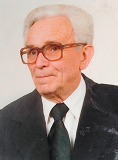 W
WWładysław Dworaczek was a Polish educator and community organiser, as well as a political prisoner in the Nazi concentration camps.
 W
WAnthony Charles Faramus was an actor, author and hairdresser. He was born in Saint Peter, Jersey and died in Surrey. The autobiographical accounts of his survival of Fort de Romainville, Buchenwald and the Mauthausen-Gusen concentration camp complex were published as The Faramus Story in 1954 and Journey into Darkness in 1990. Two books about Agent Zigzag, the double agent Eddie Chapman, also document aspects of Faramus's 'ruse' to join the Nazis as a collaborator and a spy, his imprisonment in Jersey, Paris and the concentration camps.
 W
WAdolf Fierla was a Polish writer and poet from the region of Cieszyn Silesia.
 W
WLeopold Figl was an Austrian politician of the Austrian People's Party and the first Federal Chancellor after World War II. He was also the youngest Federal Chancellor of Austria after the war before Sebastian Kurz.
 W
WRoman Frister wrote The Cap: The Price of a Life, an autobiographical account of his life living in Nazi occupied Poland and then Poland under the communists.
 W
WStanisław Grzesiuk was a Polish writer, poet, singer, and comedian. He is notable as one of the few public figures to use and promote the singing style and dialect of pre-war Warsaw after their near extinction in the aftermath of the 1944 Warsaw Uprising.
 W
WIsrael Gutman was a Polish-born Israeli historian and a survivor of the Holocaust.
 W
WMoshe Ha-Elion is a Holocaust survivor and writer. He was born in Thessaloniki, Greece, on February 26, 1925. He survived Auschwitz, the death march, Mauthausen, Melk, and Ebensee. He is the author of a memoir, מיצרי שאול, originally written in Hebrew and translated into English as The Straits of Hell: The chronicle of a Salonikan Jew in the Nazi extermination camps Auschwitz, Mauthausen, Melk, Ebensee. He wrote three poems in Ladino based on his experience in the concentration camps and the death march: "La djovenika al lager", "Komo komian el pan", and "En marcha de la muerte", published in Ladino and Hebrew under the title En los Kampos de la Muerte. Moshe Ha-Elion has translated Homer's Odyssey into Ladino. He lives in Israel. He has two children, six grandchildren, and nine great-grandchildren.
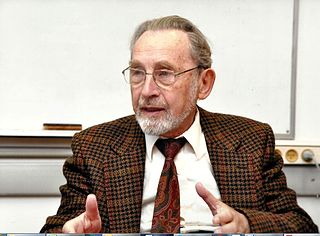 W
WDavid Weiss Halivni is a European-born American-Israeli rabbi, scholar in the domain of Jewish Sciences, and Professor of Talmud. He serves as Reish Metivta of the Union for Traditional Judaism's rabbinical school.
 W
WWilhelm Heckmann was a German concert and easy listening musician. From 1937 to 1945 he was imprisoned in the Nazi concentration camps in Dachau and Mauthausen. Heckmann founded the first prisoner band in Mauthausen, and was also instrumental in the founding of the large prisoner orchestra there.
 W
WPère (Father) Jacques de Jésus, O.C.D., was a French Roman Catholic priest and Discalced Carmelite friar. While serving as headmaster of a boarding school run by his Order, he took in several Jewish refugees to protect them from the Nazi government of occupation, for which he was arrested and imprisoned in various Nazi concentration camps.
 W
WDr. Miklós Kállay de Nagykálló was a Hungarian politician who served as Prime Minister of Hungary during World War II, from 9 March 1942 to 22 March 1944. By early 1942, Hungary's regent Admiral Horthy was seeking to put some distance between himself and Hitler's regime. He dismissed the pro-German prime minister László Bárdossy, and replaced him with Kállay, a moderate whom Horthy expected to loosen Hungary's ties to Germany. Kállay successfully sabotaged economic cooperation with Nazi Germany, protected refugees and prisoners, resisted Nazi pressure regarding Jews, established contact with the Allies and negotiated conditions under which Hungary would switch sides against Germany. However the Allies were not close enough. When the Germans occupied Hungary in March 1944 Kállay went into hiding. He was finally captured by the Nazis, but was liberated when the war ended.
 W
WIakovos Kambanellis was a Greek poet, playwright, screenwriter, lyricist, and novelist.
 W
WJerzy Kaźmirkiewicz was a Polish scientist and university professor, a specialist in wood industry at the Warsaw Agricultural University (SGGW).
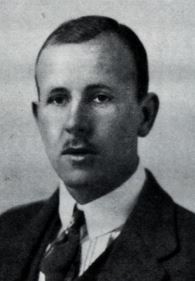 W
WNiels-Henrik Kolderup was a Norwegian geologist, seismologist, and professor. He served as Vice-Chancellor of the University of Bergen. He was a member of the Conservative Party and served as a member of the Norwegian Parliament (1945-1953).
 W
WGemma La Guardia Gluck was an American writer, of Italian Jewish origin, who lived in Hungary and was a survivor of the Holocaust. Her autobiography, published in 1961, tells of her experience as a survivor of the Ravensbrück concentration camp, but also offers vivid memories of her childhood spent in America with her parents and brother Fiorello La Guardia, the future first Italian-American mayor of New York.
 W
WAndré Lafargue was a French journalist and theatre critic.
 W
WJulien Lahaut was a Belgian politician and communist activist. He became leader of the Communist Party of Belgium after the First World War. A dissident during the German occupation of 1940–44, he became a vocal advocate for the abolition of the Belgian monarchy during the post-war "Royal Question". His assassination in August 1950, at the height of the crisis, has often been attributed to Belgian royalists but remains unsolved.
 W
WHenri Landwirth was an hotelier, philanthropist, and a Holocaust survivor. He was the founder of Give Kids The World and Dignity U Wear.
 W
WJan Liwacz was a master blacksmith and prisoner of Auschwitz concentration camp best known for the infamous "Arbeit macht frei" slogan over the camp's main entrance gate that he made. When the SS ordered him to make this sign, he placed a hidden message in the word Arbeit: he turned the letter B upside down.
 W
WGeorges Loustaunau-Lacau was a French army officer, anti-communist conspirator, resistant, and politician.
 W
WHans Maršálek was an Austrian typesetter, political activist, detective, and historian. A devout socialist and active in the resistance, he was arrested by the Nazis and imprisoned in the Mauthausen concentration camp. After the war, he joined the Austrian political police and was instrumental in tracking down and convicting numerous Nazi criminals. He also became the main chronicler of the camp's history, helped establish the Mauthausen Memorial Museum, and published several books.
 W
WMax Moszkowicz Sr. is a retired Dutch lawyer.
 W
WAntonín Josef Novotný was First Secretary of the Communist Party of Czechoslovakia from 1953 to 1968, and also held the post of President of Czechoslovakia from 1957 to 1968. An ardent hardliner, Novotný was forced to yield the reins of power to Alexander Dubček during the short-lived reform movement of 1968.
 W
WJan Stanisław Olbrycht was a Polish medic, university professor and one of the most renowned specialists in forensics of the early 20th century. Throughout his life he served as a chief specialist in various trials, especially in the assessment of evidence. Between 1923 and his retirement in 1962 he was a professor at the Kraków-based Jagiellonian University. From 1931 he was also a member of the Polish Academy of Skills and from 1958 - of the Polish Academy of Sciences. Arrested by the Germans in 1942, he spent the rest of the war in Auschwitz and then Mauthausen-Gusen concentration camp.
 W
WOtto Paul Eberhard Peltzer was a German middle distance runner who set world records in the 1920s. Over the 800 m Peltzer improved Ted Meredith's long-standing record by 0.3 seconds to 1:51.6 min in London in July 1926. Over the 1000 m he set a world record of 2:25.8 in Paris in July 1927, and over 1500 m Peltzer broke Paavo Nurmi's world record (3:52.6) and set a new one at 3:51.0 in Berlin in September 1926. Peltzer was the only athlete to have held the 800 m and the 1500 m world records simultaneously, until Sebastian Coe matched the feat over fifty years later.
 W
WKarol Piegza was a Polish teacher, writer, folklorist, photographer, and painter from Zaolzie region of Cieszyn Silesia.
 W
WHeinrich Gottlob "Heiner" Rau was a German communist politician during the time of the Weimar Republic; subsequently, during the Spanish Civil War, he was a leading member of the International Brigades and after World War II an East German statesman.
 W
WRaimondo Ricci was an Italian politician and partisan, President of National Association of Italian Partisans from 2009 to 2011.
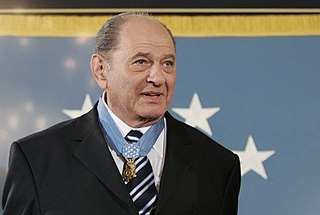 W
WTibor "Ted" Rubin was a former Hungarian–American Army Corporal. A Holocaust survivor who immigrated to the United States in 1948, he fought in the Korean War and was awarded the Medal of Honor for his actions during the war, as a combatant and a prisoner of war (POW).
 W
WErdmonas Simonaitis was a Prussian Lithuanian activist particularly active in the Klaipėda Region and advocating its union with Lithuania. During the staged Klaipėda Revolt of 1923, he headed the pro-Lithuanian government of the region. For his anti-German activities, he was persecuted by the Nazis during World War II. He survived the Mauthausen-Gusen and Dachau concentration camps. After the war he remained in Germany and rejoined various Lithuanian organizations. He was awarded the Order of Vytautas the Great and Order of the Lithuanian Grand Duke Gediminas.
 W
WStanisław Staszewski was a Polish architect and poet. He was the father of Kazimierz Staszewski and the author of many songs and ballads, sung both by his son and by Jacek Kaczmarski.
 W
WBrian Julian Warry Stonehouse MBE was an English painter and Special Operations Executive agent during World War II. He was born in Torquay, England and had a brother, Dale. When his family moved to France, he went to school in Wimereux, Pas-de-Calais. Back in Britain in 1932, he studied at the Ipswich School of Art.
 W
WGrzegorz Timofiejew was a Polish poet of distant Russian ancestry. He was born and died in Łódź.
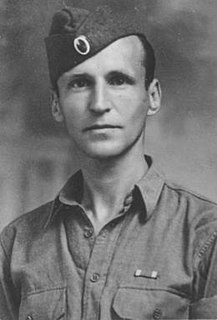 W
WŽarko P. Todorović "Valter" was one of the leaders of the Chetnik resistance in the first phase of World War II in the German occupied Yugoslavia, serving as first commander of the undercover Chetnik headquarters in Belgrade.
 W
WDenise Vernay-Jacob was a member of the French Resistance during World War II, who operated under the aliases of "Miarka" and "Annie" from 1941. She narrowly avoided the March 1944 roundup of Jews in Nice, France which resulted in the deportation of her parents to Auschwitz concentration camp in occupied Poland. Captured less than three months later, she survived torture by the Gestapo and imprisonment at two Nazi concentration camps – Ravensbrück and Mauthausen. She was rescued by the Red Cross in April 1945 and returned home to France at the conclusion of the war.
 W
WWalter Vielhauer (help·info) was a communist and anti-fascist of Heilbronn who was held captive by Nazi Germany before and during World War II.
 W
WSimon Wiesenthal was a Jewish Austrian Holocaust survivor, Nazi hunter, and writer. He studied architecture and was living in Lwów at the outbreak of World War II. He survived the Janowska concentration camp, the Kraków-Płaszów concentration camp, the Gross-Rosen concentration camp, a death march to Chemnitz, Buchenwald, and the Mauthausen-Gusen concentration camp.
 W
WFrantišek Záviška was a renowned Czech physicist. The major asset of his scientific work is integrated in nine studies on waveguides published between the years 1912 and 1939. They evaluated, on the basis of the Maxwell equations, the effect of radiation by electromagnetic waves in space using conductible and non-conductible cylinders, tubes and their combinations, organized in different ways. The results of Záviška's experiments were groundbreaking, but they were published in Czech journals only and never became known abroad.